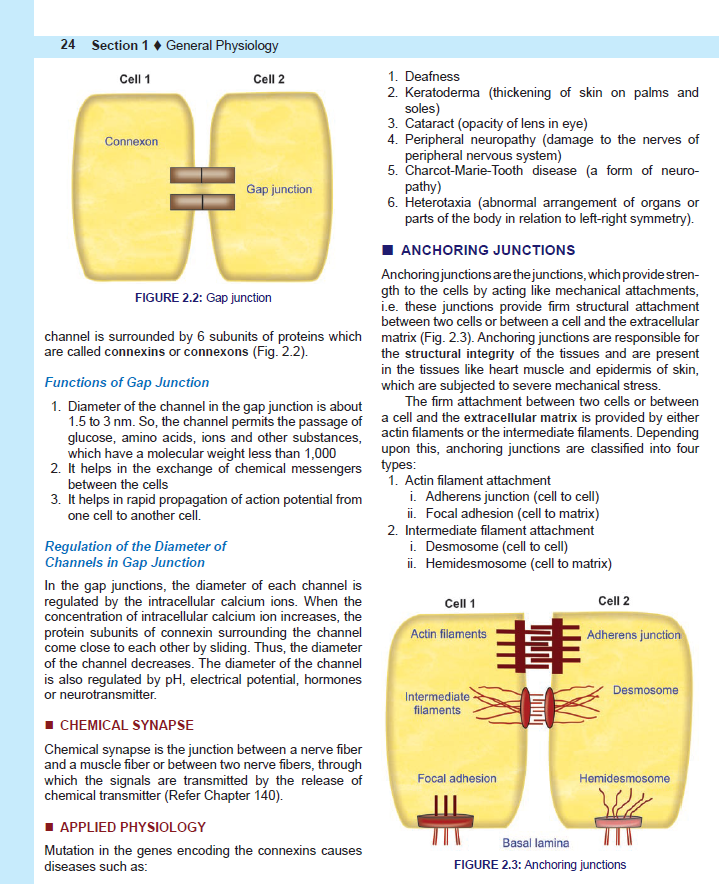Name: Essentials of Medical Physiology
Edition: 6th
Author: K Sembulingam; Prema Sembulingam
Subject: Physiology
Language: English
Publisher: JAYPEE BROTHERS MEDICAL PUBLISHERS (P) LTD

Brief Introduction
Physiology is the most fascinating and ancient branch of science. It is fascinating because, it unfolds the mystery of complicated functional aspects of individual organs in the body. It is ancient because, it exists ever since the origin of life. Even before knowing the language, culture and society, man knew about the hunger, thirst, pain and fear which are the basics of physiology.
With this Sixth edition, Sembulingam’s Essentials of Medical Physiology enters into its second decade and the core subject matter with updated physiological information remain as green as ever. We live in an era where the thirst for knowledge and urge for learning is so much increased that even a layman knows the fundamentals of common disorders like diabetes mellitus, hypertension, jaundice, etc. So, it becomes doubly important to fulfill the expectations of the educated mass, especially in medical field.
We are humbly thankful and heavenly happy for the popularity of this book among the undergraduate and postgraduate students of medical, dental and paramedical courses, doctors and other health professionals in and out of our country. Like many other successful textbooks, this book also has sailed through the years smoothly, fruitfully and successfully. May be because, it meets the needs of every group of the readers. Students are happy because it is student-friendly while reading, and exam-friendly while revising. Knowledge seekers are happy because they get the updated and recent developments in the field of physiology. Doctors are happy because applied aspects are covered adequately.
Contents
SECTION 1 GENERAL PHYSIOLOGY
- Cell
- Cell Junctions
- Transport through Cell Membrane
- Homeostasis
- Acid-Base Balance
SECTION 2 BLOOD AND BODY FLUIDS
- Body Fluids
- Blood
- Plasma Proteins
- Red Blood Cells
- Erythropoiesis
- Hemoglobin and Iron Metabolism
- Erythrocyte Sedimentation Rate
- Packed Cell Volume and Blood Indices
- Anemia
- Hemolysis and Fragility of Red Blood Cells
- White Blood Cells
- Immunity
- Platelets
- Hemostasis
- Coagulation of Blood
- Blood Groups
- Blood Transfusion
- Blood Volume
- Reticuloendothelial System and Tissue Macrophage
- Spleen
- Lymphatic System and Lymph
- Tissue Fluid and Edema
SECTION 3 MUSCLE PHYSIOLOGY
- Classification of Muscles
- Structure of Skeletal Muscle
- Properties of Skeletal Muscle
- Changes during Muscular Contraction
- Neuromuscular Junction
- Smooth Muscle
- Electromyogram and Disorders of Skeletal Muscle
- Endurance of Muscle
SECTION 4 DIGESTIVE SYSTEM
- Introduction to Digestive System
- Mouth and Salivary Glands
- Stomach
- Pancreas
- Liver and Gallbladder
- Small Intestine
- Large Intestine
- Movements of Gastrointestinal Tract
- Gastrointestinal Hormones
- Digestion, Absorption and Metabolism of Carbohydrates
- Digestion, Absorption and Metabolism of Proteins
- Digestion, Absorption and Metabolism of Lipids
…….
SECTION 10 NERVOUS SYSTEM
- Introduction to Nervous System
- Neuron
- Classification of Nerve Fibers
- Properties of Nerve Fibers
- Degeneration and Regeneration of Nerve Fibers
- Neuroglia
- Receptors
- Synapse
- Neurotransmitters
- Reflex Activity
- Spinal Cord
- Somatosensory System and Somatomotor System
- Physiology of Pain
- Brainstem
- Thalamus
- Internal Capsule
- Hypothalamus
- Cerebellum
- Basal Ganglia
- Cerebral Cortex
- Limbic System
- Reticular Formation
- Preparations of Animals for Experimental Studies
- Proprioceptors
- Posture and Equilibrium
- Vestibular Apparatus
- Electroencephalogram (EEG)
- Physiology of Sleep
- Epilepsy
- Higher Intellectual Functions
- Cerebrospinal Fluid (CSF)
- Autonomic Nervous System (ANS)
SECTION 11SPECIAL SENSES
- Structure of the Eye
- Visual Process
- Field of Vision
- Visual Pathway
- Pupillary Reflexes
- Color Vision
- Errors of Refraction
- Structure of Ear
- Auditory Pathway
- Mechanism of Hearing
- Auditory Defects
- Sensation of Taste
- Sensation of Smell
Index
Excerpts
…
Muscle mass or muscle tissue is made up of a large number of individual muscle cells or myocytes. The muscle cells are commonly called muscle fibers because these cells are long and slender in appearance. Skeletal muscle fibers are multinucleated and are arranged parallel to one another with some connective tissue in between (Fig. 29.1). Muscle mass is separated from the neighboring tissues by a thick fibrous tissue layer known as fascia. Beneath the fascia, muscle is covered by a connective tissue sheath called epimysium. In the muscle, the muscle fibers are arranged in various groups called bundles or fasciculi. Connective tissue sheath that covers each fasciculus is called perimysium. Each muscle fiber is covered by a connective tissue layer called the endomysium (Fig. 29.2).
Page 169
…
Screenshots





Download Links
The download links are hidden, you should sign-in and pay the fee(diamonds) or points to get the links.
The links Including:
- Essentials of Medical Physiology (6th Edition)-PDF
?